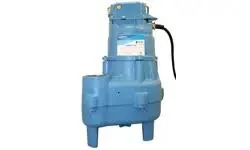Icelandic
- Afrikaans
- Albanian
- Amharic
- Arabic
- Armenian
- Azerbaijani
- Basque
- Belarusian
- Bengali
- Bosnian
- Bulgarian
- Catalan
- Cebuano
- Corsican
- Croatian
- Czech
- Danish
- Dutch
- English
- Esperanto
- Estonian
- Finnish
- French
- Frisian
- Galician
- Georgian
- German
- Greek
- Gujarati
- Haitian Creole
- hausa
- hawaiian
- Hebrew
- Hindi
- Miao
- Hungarian
- Icelandic
- igbo
- Indonesian
- irish
- Italian
- Japanese
- Javanese
- Kannada
- kazakh
- Khmer
- Rwandese
- Korean
- Kurdish
- Kyrgyz
- Lao
- Latin
- Latvian
- Lithuanian
- Luxembourgish
- Macedonian
- Malgashi
- Malay
- Malayalam
- Maltese
- Maori
- Marathi
- Mongolian
- Myanmar
- Nepali
- Norwegian
- Norwegian
- Occitan
- Pashto
- Persian
- Polish
- Portuguese
- Punjabi
- Romanian
- Russian
- Samoan
- Scottish Gaelic
- Serbian
- Sesotho
- Shona
- Sindhi
- Sinhala
- Slovak
- Slovenian
- Somali
- Spanish
- Sundanese
- Swahili
- Swedish
- Tagalog
- Tajik
- Tamil
- Tatar
- Telugu
- Thai
- Turkish
- Turkmen
- Ukrainian
- Urdu
- Uighur
- Uzbek
- Vietnamese
- Welsh
- Bantu
- Yiddish
- Yoruba
- Zulu
Telephone: +86 13120555503
Email: frank@cypump.com
des . 11, 2024 06:33 Back to list
Optimizing Slurry Pump Bearing Assembly for Enhanced Performance and Durability
Understanding Slurry Pump Bearing Assembly Key Components and Functions
Slurry pumps are essential apparatuses in various industries, including mining, metallurgy, and chemical processing, where the transportation of abrasive and viscous materials is necessary. A critical component of these pumps is the bearing assembly, which plays a significant role in ensuring operational efficiency and longevity. This article delves into the components, functions, and importance of the slurry pump bearing assembly.
Components of Slurry Pump Bearing Assembly
The bearing assembly of a slurry pump consists of several key components that work together to support the rotor and minimize friction during operation
1. Bearings The core of the bearing assembly, bearings come in various designs, including journal and thrust bearings. They are designed to withstand high loads and provide rotational support to the pump shaft.
2. Bearing Housing This is the casing that holds the bearings in place. It protects the bearings from dust, moisture, and other contaminants, which could lead to premature wear or failure.
3. Shaft The pump shaft connects the rotor to the motor. It transfers the rotational motion from the motor to the impeller, allowing for the movement of the slurry.
4. Seal or Gasket Seals are crucial for preventing fluid leaks from the pump. In slurry pumping applications, gaskets or mechanical seals are often used to keep abrasive materials from escaping the bearing housing.
5. Lubrication System Proper lubrication is essential for minimizing friction and heat generation within the bearing assembly. Various lubrication methods can be employed, including grease and oil-based systems, depending on the operational requirements.
Functions of the Bearing Assembly
The primary functions of the slurry pump bearing assembly include
- Support and Alignment The assembly provides structural support and proper alignment of the pump shaft and impeller, ensuring efficient performance.
slurry pump bearing assembly

- Load Bearing The bearings must accommodate axial and radial loads during operation
. This involves the distribution of weight and pressure across the bearings to prevent localized wear.- Friction Reduction By minimizing friction between moving parts, the bearing assembly helps to reduce power consumption and heat generation, leading to improved pump efficiency.
- Vibration Dampening The bearings mitigate vibrations produced during operations, which can be detrimental to machine integrity and performance if left unchecked.
- Sealing Preventing the escape of slurry and maintaining lubrication within the bearing assembly is crucial. Effective sealing protects the bearings from abrasive materials, which can cause wear and damage.
Importance of Maintenance
Regular maintenance of the slurry pump bearing assembly is vital to ensure optimal performance and extend the lifespan of the pump. Maintenance tasks may include
- Routine Inspections Regular checks for signs of wear, misalignment, or contamination help in early detection of potential issues.
- Lubrication Checks Ensuring that bearings are adequately lubricated can prevent overheating and excessive wear. It is important to use the correct type and amount of lubricant.
- Seal Integrity Checks Inspecting seals and gaskets for damage or wear is essential to prevent leaks and protect the bearings.
- Replacement of Worn Parts Identifying and replacing any components that show signs of wear can prevent costly breakdowns and improve the overall reliability of the slurry pump.
Conclusion
The slurry pump bearing assembly is a critical component that ensures the efficient and reliable operation of slurry pumps in various industrial applications. Understanding its components, functions, and the importance of maintenance can significantly enhance operational efficiency and reduce downtime. By investing in proper care and attention for the bearing assembly, industries can maximize the performance of their slurry pumps, leading to improved productivity and cost-effectiveness in their operations.
-
Reliable Non-Clog Sewage Pumps with GPT-4-Turbo Tech
NewsAug.04,2025
-
High-Performance Air Pumps for Sand & Gravel | Efficient Transport
NewsAug.03,2025
-
ISG Series Vertical Pipeline Pump - Chi Yuan Pumps Co., LTD.|Energy Efficiency, Corrosion Resistance
NewsAug.03,2025
-
ISG Series Pipeline Pump - Chi Yuan Pumps | Energy Efficiency&Compact Design
NewsAug.03,2025
-
ISG Series Vertical Pipeline Pump - Chi Yuan Pumps Co., LTD.|High Efficiency, Low Noise, Durable
NewsAug.02,2025
-
ISG Series Vertical Pipeline Pump - Chi Yuan Pumps | High Efficiency, Low Noise
NewsAug.02,2025










